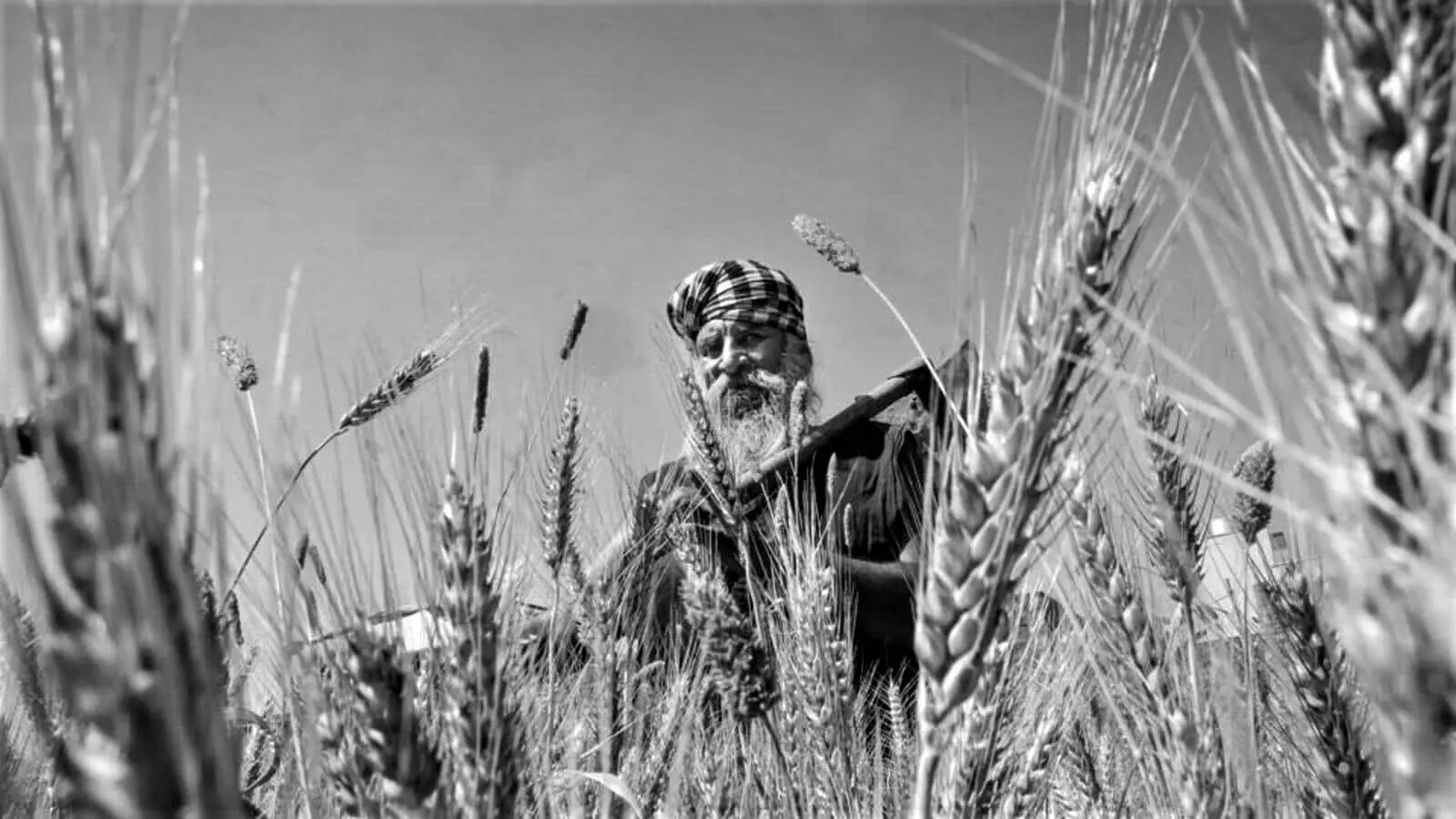'Sab changa si?'
In the context of one of the most prominent sectors — agriculture — Budget 2023 is inclined towards private investment, startups and credit, rather than government spending

The agriculture sector was expected to be on a high-priority list but it has been ignored in the Union Budget 2023-24, with even flagship government schemes receiving a lacklustre allocation. The overall allocation for the sector saw a marginal increase of 4.7 per cent — from Rs 11,02,54.53 crore in the Revised Estimates (RE) of the financial year (FY) 2022-23 to Rs 11,55,31.79 crore in 2023-24.
Including the department of agricultural research and education, the overall allocation to the sector was Rs 12,50,35.79 crore, against the 2022-23 revised estimates of Rs 11,89,13.42 crore. But the allocation has been reduced by almost 7 per cent compared to what was proposed in the 2022-23 budget. The share of agriculture in the overall budget has also fallen sharply in the budget for FY 2023-24. While the sector got 3.36 per cent of the total allocation last year, this time it was just 2.7 per cent of the total budget.
The government had set an ambitious target to double farmers’ income by 2022. But while there was absolute silence on that promise, two major schemes — Market Intervention Scheme and Price Support (MIS-PSS) and Pradhan Mantri Annadata Aay Sanrakshan Yojna (PM-AASHA) — that ensure minimum support price-based procurement operations in the country saw a drastic cut.
MIS-PSS was virtually ignored as its allocation got reduced from Rs 1,500 crore to Rs 1 lakh, almost a 100 per cent cut. The PM-AASHA scheme also saw a reduction from Rs 1 crore to Rs 1 lakh. The allocation to Pradhan Mantri Kisan Samman Nidhi (PM-KISAN), a cash incentive scheme for landholder farmers, remained unchanged, at Rs 60,000 crore.
Kiran Vissa, co-founder of Rythu Swarajya Vedika, a farmers’ organisation based in Hyderabad, said:
Earlier, at least rhetorically, the finance minister used to mention MSP. This time the schemes meant to ensure MSP have been closed down. This shows the commitment of the government to ensuring a fair price for farmers.
The budget document as well as Finance Minister Nirmala Sitharaman’s speech seemed to tilt towards private investment, startups and credit in the agriculture sector, rather than government spending. The Economic Survey Report 2022-23, tabled in the Parliament on January 31, 2023, also showed that while government investment in agriculture has declined from 5.4 per cent in 2011-12 to 4.3 per cent in 2020-21, private investment was at a high of 9.3 per cent.
Sitharaman announced various measures to boost private investment in agriculture, like setting up an ‘Agriculture Accelerator Fund’ to encourage agri-startups by young entrepreneurs in rural areas. “The fund will aim at bringing innovative and affordable solutions for challenges faced by farmers. It will also bring in modern technologies to transform agricultural practices, and increase productivity and profitability,” she said.
An Agriculture Infrastructure Fund (AIF) already exists for the creation of post-harvest management infrastructure and community farm assets. Under this scheme, Rs 1 lakh crore was to be disbursed by the financial year 2025-26 and the interest subvention and credit guarantee assistance was given till the year 2032-33. In FY 2022-23, out of the proposed allocation of Rs 500 crore, the actual revised estimates were Rs 150 crore. Another Rs 500 crore has been allocated in the 2023-24 budget.
Finance Minister Sitharaman, in her speech, also mentioned building a “digital public infrastructure” for agriculture to enable “inclusive, farmer-centric solutions through relevant information services for crop planning and health, improved access to farm inputs, credit and insurance, help for crop estimation, market intelligence, and support for the growth of agri-tech industry and start-ups”.
Experts believe that wider allocations to farmers are being reduced by announcing new funds. “This is a trend we are seeing that certain announcements are being made to grab the headlines. Most of these are just in the form of loans and credit,” said Vissa. Food and agriculture policy expert Devinder Sharma also said that the biggest problem of enhancing the income of farmers has not been addressed. “We don’t want credit for farmers, we want income for farmers.”
This is a budget for the middle and rich classes and has nothing to offer for agriculture, he added. “It can be clearly seen that the government has no intention to invest in the sector.” Start-ups are basically middlemen and themselves in crisis, the expert noted. “They can’t take care of the sector completely. Most of the announcements are for agri-businesses but agri-businesses are not farmers.”
Pradhan Mantri Fasal Bima Yojana, the government’s flagship crop insurance scheme, was given Rs 13,625 crore — more than the 2022-23 revised estimates of Rs 12,375 crore, but less than the proposed allocation of Rs 15,500 last year. This, experts said, also indicated farmers’ loss of interest in the insurance scheme.
Placing an emphasis on promoting natural farming, a Natural Mission on Organic Farming was introduced in the budget, with an allocation of Rs 459 crore. The finance minister also announced that the Indian Institute of Millet Research, Hyderabad will be supported as the Centre of Excellence for sharing best practices, research and technologies at the international level to make India a global hub for millets.
However, the bottom line remains: Agriculture is ignored, and schemes for ensuring MSP-based procurement nearly ‘closed down’. DTE
Views expressed are personal




